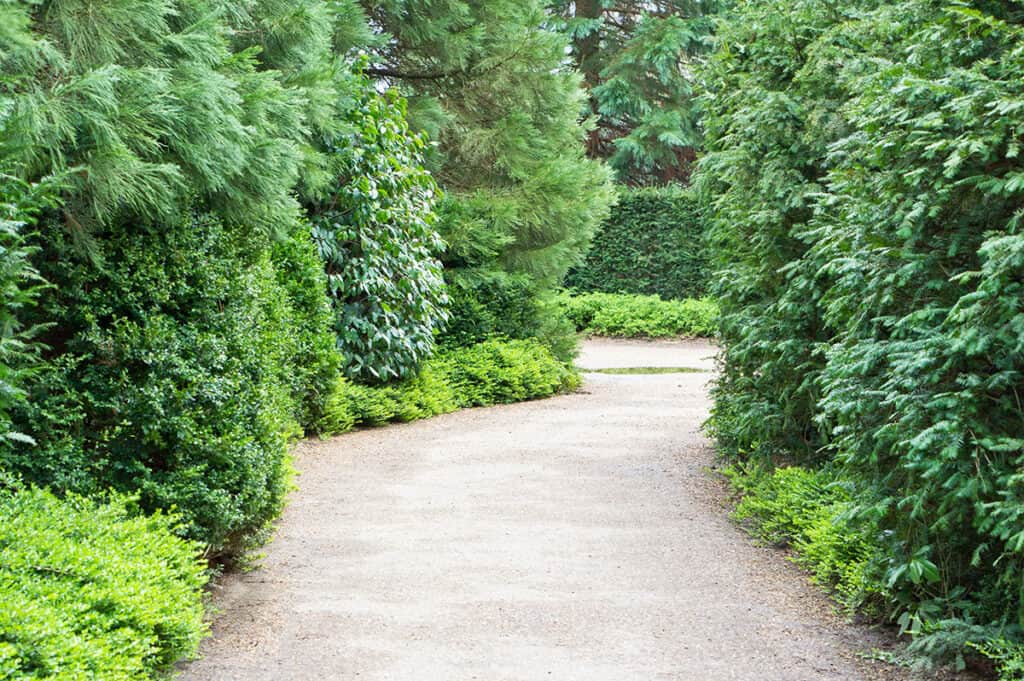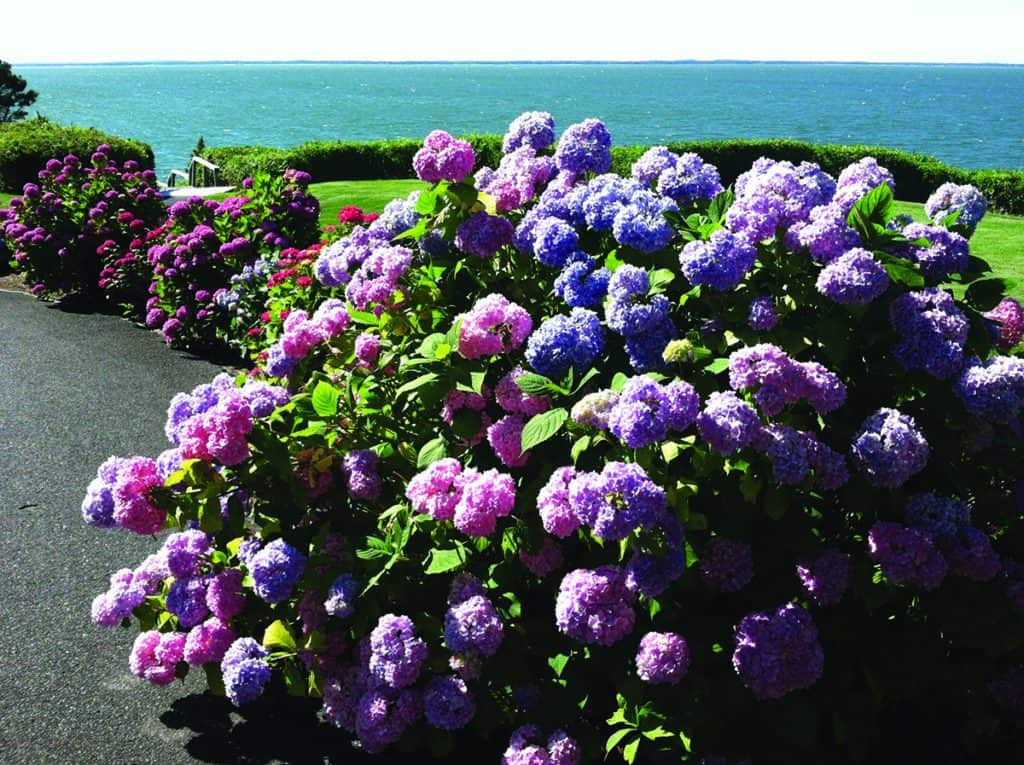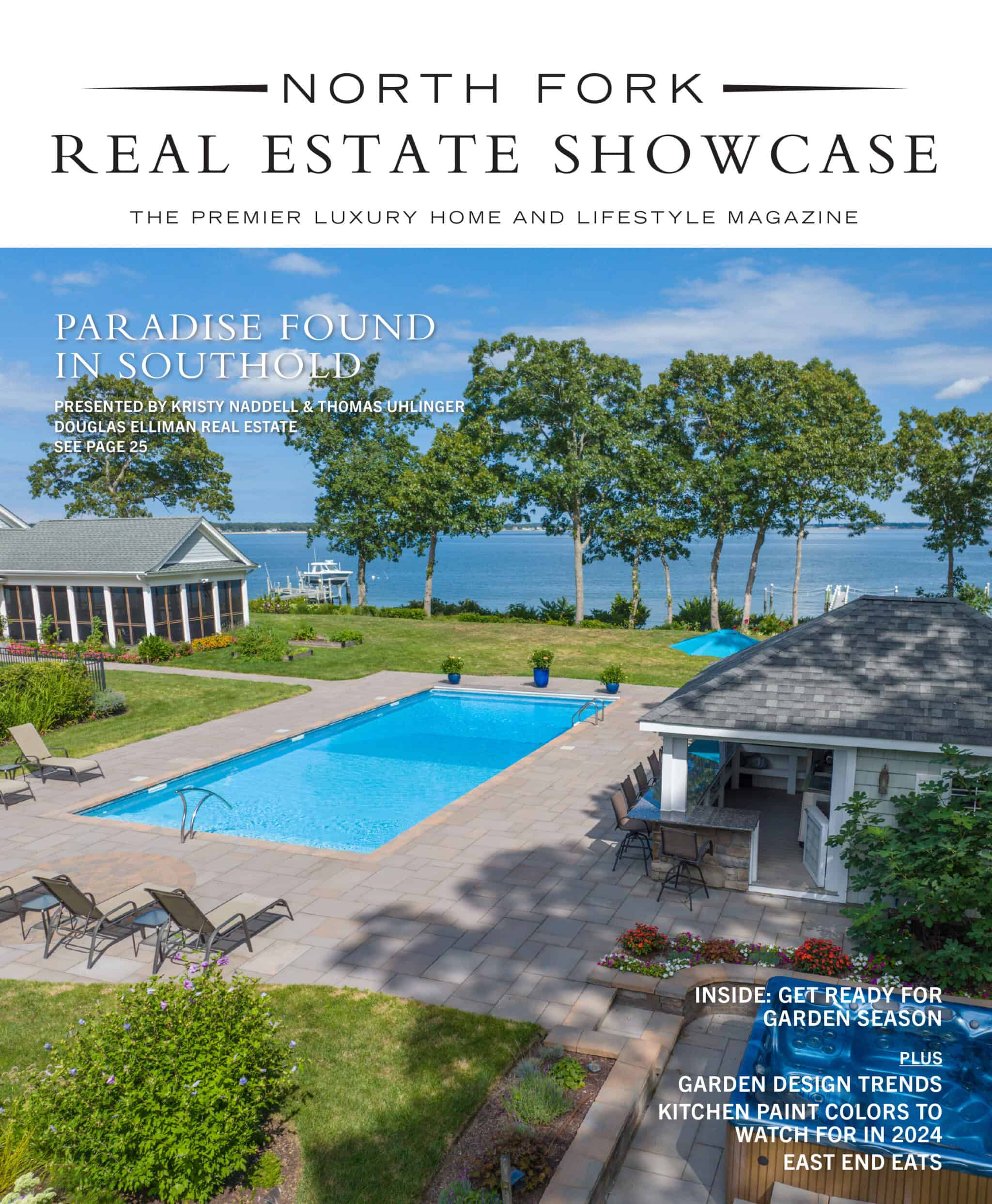The first step in designing a landscape for privacy is to figure out where you need to hide eyesores or provide screening for a pool or a deck or patio where you like to entertain or just relax with a good book. When you’ve determined where and what kind of privacy screening you need, consider how much space you have available for privacy plantings and what size they need to be. Towering walls of perfectly sheared privet provide privacy for many homes on the East End.

Depending on how much privacy you’ll need, the architectural style of your home and property, and what landscape features are already there, you can create privacy with a formal hedge or an informal screen of plants. If you want to deter wandering wildlife or human intruders you can consider a dense, thorny barrier screen.
Another consideration for privacy screening is whether there are deer in your area and you’ll need screening they are not likely to eat. For now, privet, Leyland cypress and junipers are reasonable bets. Arborvitae used to be widely used but it’s no longer deer resistant.
You’ll also want to factor in how fast your privacy screen will grow. A plant that grows quickly will provide screening sooner than a slower growing one, but it may also grow taller than you want (Leyland cypress is an example) and cast shade where you don’t want it. A tall hedge on the south side of your property will cast a lot of shade over a lawn or garden behind it. Another consideration is how fast the plants will grow; fast growers like arborvitae will need to be replaced more often than slower growers.
In an informal screen, plants can be allowed to grow into their natural forms without a lot of meticulous shearing. The look is softer and looser. For example, privet left unsheared takes on a sort of billowy form. A screen of shrubs that do not need clipping, while it won’t be a solid wall, can offer other features such as flowers or easier maintenance. Some good informal screening shrubs that will give you flowers include viburnum, bridalwreath spiraea, rose of Sharon, summersweet (Clethra), lilacs and hydrangeas (which are an iconic flower on the East End but also deer favorites). These plants lose their leaves in winter, but if you are only here for the summer or don’t use your outdoor space in the cold season that may not be an issue for you.

Here are some plants to consider planting for privacy:
Privet — the classic hedge plant — has medium to dark green small oval leaves and can grow 12 or more feet high. Plants naturally produce white flowers with an unpleasantly sweet odor in summer, but pruning or shearing usually prevents blooming.
Leyland cypress can grow to 60 or more feet high and has a columnar upright form. It is salt tolerant, making it a good choice for screening properties near the shore. It’s often used in screens and informal hedges but can be sheared for a more formal look.
Junipers come in many forms from low, spreading groundcover types to the eastern red cedar which can grow up to 40 or 50 feet high. Chinese juniper comes in numerous varieties. Junipers grow best in well-drained soil with lots of sun.
Clethra, also called sweet pepperbush, sends out wands of fragrant white flowers in summer (mine is blooming in late July). It does well in a sheltered, partly shaded spot, and works well in an informal, shade border away from the water.
Spirea, especially bridalwreath spirea, is easy to grow and forms a tall mound 5 to 6 feet high, with graceful, arching stems. Plants are covered with clusters of tiny white flowers in spring and are lovely as an informal hedge or screen.
Rose of Sharon, a species of hibiscus, is easy to grow and can be planted in a row along a driveway, as an informal screen. Plants grow 6 to 12 feet high and half as wide, and come in a host of colors from white to shades of pink, red and even blue. Give rose of Sharon a sunny location and it can thrive in even poor soils. It does best behind a windbreak near the beach.
Hydrangea is an iconic East End flower, its ethereal blue blossoms gracing many properties. It’s lovely in a screen planting as long as you can keep deer off your property. Plants do best in full sun to light shade, away from the beach or protected behind a windbreak.








